Singapore Pineapple Tart Recipe features bite-sized treats made with rich, buttery pastry shells filled with homemade pineapple jam. The short-crust pastry shells have a melt-in-your-mouth texture that crumbles gently with every bite. Fresh pineapple is grated and simmered with coconut palm sugar, cane sugar, and a hint of nutmeg for a tangy, sweet filling. This iconic Southeast Asian snack can be enjoyed with tea, coffee, or for dessert!
I have enjoyed these delicious tarts everywhere in Singapore. My husband’s aunt introduced me to the quintessential Singapore Pineapple Tart. Her Malaysian-Chinese heritage allowed her to tap into the Peranakan recipes. Her recipe is the most delicious I have ever had and is quite easy to make.
Origin of the Singapore Pineapple Tart:
There is perhaps an assumption that the origin of this Pineapple Tart recipe is Chinese. That is not the case. It is wholly Southeast Asian. This assumption grew because, customarily, Singapore Pineapple Tarts are exchanged between families during Chinese New Year. The reason was primarily due to the golden sheen of this glorious tropical fruit being associated with wealth or, more accurately, gold.
Pineapple has its origins in South America. Christopher Columbus called it piña de Indes because he thought that he had discovered India. Somewhere during its sojourn through Europe, the English added the antecedent, the apple. They thought it sounded more attractive, hence the pineapple. It was the Portuguese who introduced the fruit through the rest of their colonies in the Caribbean, Africa, India, and Malaca. During the late 16th century, the Peranakan tradition of blending east and west took shape in this Singapore Pineapple Tart recipe.
While the Portuguese may have brought the pineapple to Southeast Asia, it was the Dutch who supplied the rich short-crust pastry that houses this delectable dessert. When we visited Bengkulu, Indonesia, we tasted Pineapple Tarts, which were large, crimped, and encased in lattices that were very Dutch.
A Southeast Asian dessert:
We have the pineapple and the pastry, but what makes a Pineapple Tart, so Southeast Asian? They do not call them the Spice Islands for nothing. Adding to the pineapple jam are the traditional Southeast Asian favorites: palm sugar, vanilla, cinnamon, star anise, nutmeg, and cloves.
That is what I love about this dessert. It has so many elements from so many regions that it is a global dish. There are those who say that the Pineapple Tart recipe is traditionally Singaporean. My Singaporean husband would always say that it cannot be the case since until some 57 years ago, both Singapore and Malaysia were Malaya and ruled by the British.
This Singapore Pineapple Tart recipe, as it stands, predates even the British, so it stands to reason that this is not a uniquely Singaporean tradition. This dish can be found everywhere, from Malaysia to Indonesia. In fact, pineapples were seen as fast-growing cash crops to sustain the slow-growing rubber plantations in Malaysia. Singapore’s claim to fame was that in addition to being a major port, one of its earliest manufacturing industries was the canning and export of pineapples.
Like most Southeast Asian dishes, the heritage of this dessert belies politics and trade. Singapore Pineapple Tart embodies the essence of traditional Singapore baking. This artisanal pastry has earned a cherished place in the local tradition, which is why you can buy it year-round in major stores.
Frequently Asked Questions:
- What is the difference between coconut palm sugar and cane sugar?
Coconut palm sugar is less refined than cane sugar, contains healthy fats, has only 75% sucrose, and prevents high cholesterol.
2. Can margarine be used instead of butter for the pastry?
The short answer is yes. I personally prefer the buttery short-crust pastry for these tarts.
3. Are there any variations of Singapore Pineapple Tarts?
These tarts can be shaped into rounds, encased with the filling, or stuffed into pastry-like balls. Some chefs use a small amount of condensed milk and sometimes even milk powder in their pastries. Another variation is the use of flaky pastry. Cinnamon or cloves are also used to spice the filling.
4. Why are the Singapore Pineapple Tarts so popular?
In Singapore’s Chinese culture, this decadent tart recipe is a symbol of prosperity and good fortune. Hence, they are available year-round in stores, in addition to Chinese New Year celebrations.
This post may contain affiliate links. As an Amazon Associate, I earn from qualifying purchases at no extra cost to you.
If you’ve tried this recipe or have questions, I would love to hear from you. Please feel free to share (below) your thoughts, comments, or any questions that you might have. And if you like my recipes, you could subscribe to my mailing list for the latest recipes that will be delivered to your inbox. From my pen to your table, Bon Appetit!
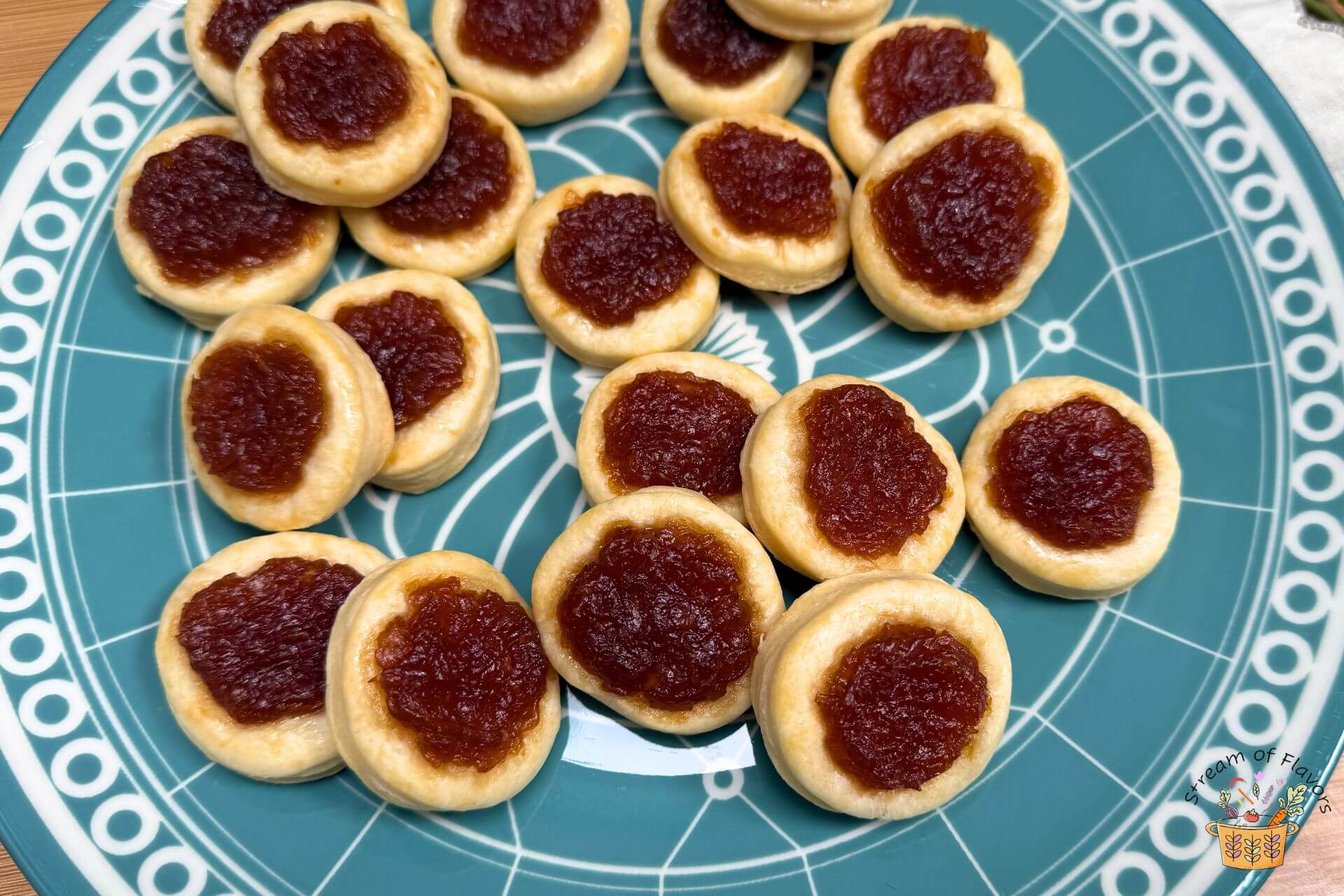
Ingredients:
For the pineapple filling:
- Butter: unsalted butter
- Sugar: coconut palm sugar and superfine caster sugar
- Spices: nutmeg (or use cloves)
- Pineapple: fresh peeled, cored, and pulsed or grated pineapple
- Pastry: short-crust (or rich short-crust with egg yolk)
Here are the step-by-step instructions on how to make this dish. For the measurements, please refer to the recipe card below.
How to make the Singapore Pineapple Tart using my recipe:
- How to make the pineapple filling:
- Heat a small heavy-bottomed pot and add the pulsed pineapple pulp.
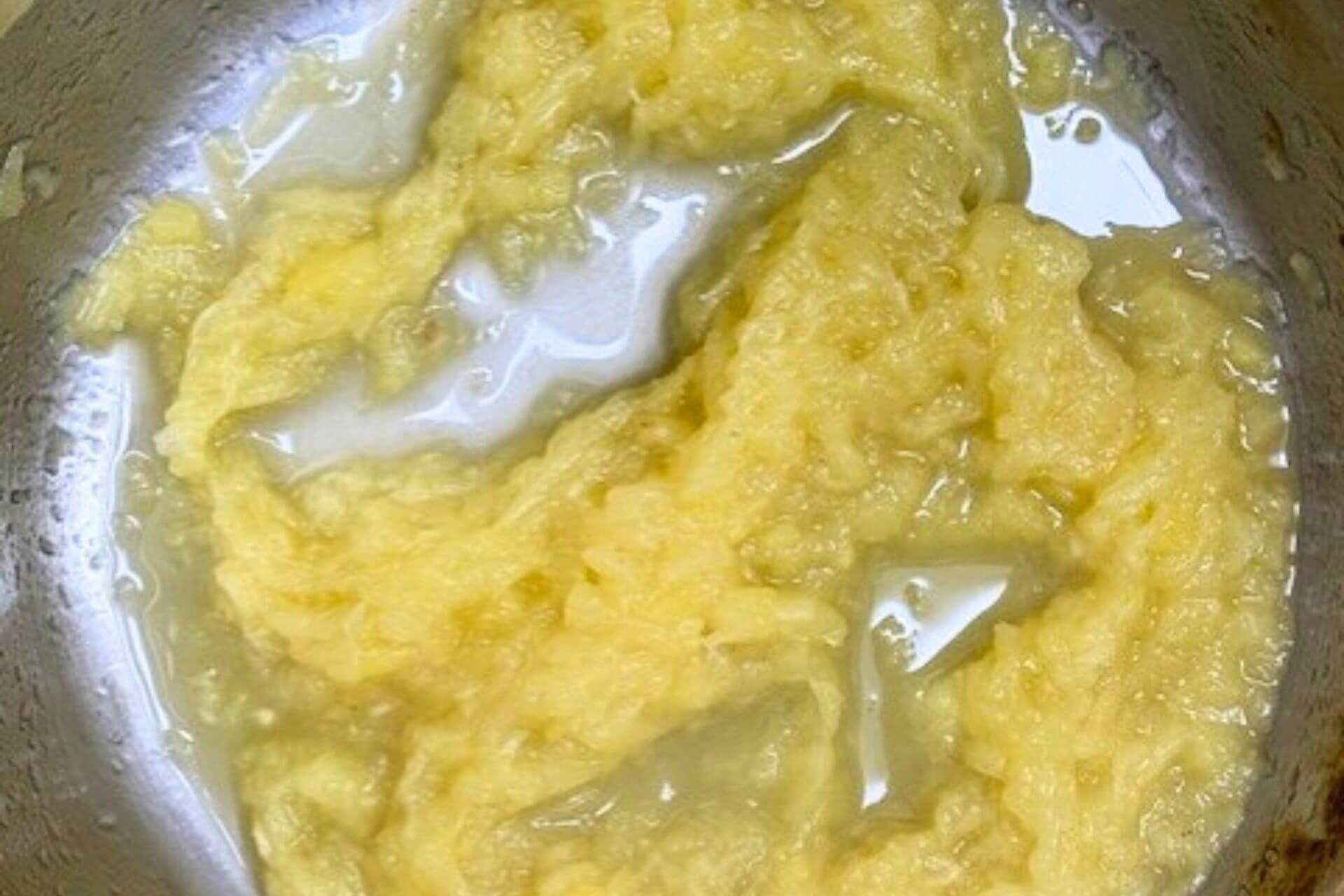
- Add the coconut palm sugar, cane sugar, salt, and butter. Stir with a wooden spoon and scrape down the sides of the pot. When the mixture boils, lower the heat and stir constantly to prevent it from burning. Cook for 14 minutes or until the filling has thickened and is almost dry (with the juices evaporated). Add the grated nutmeg and mix well. Refrigerate the mixture for 10 minutes.
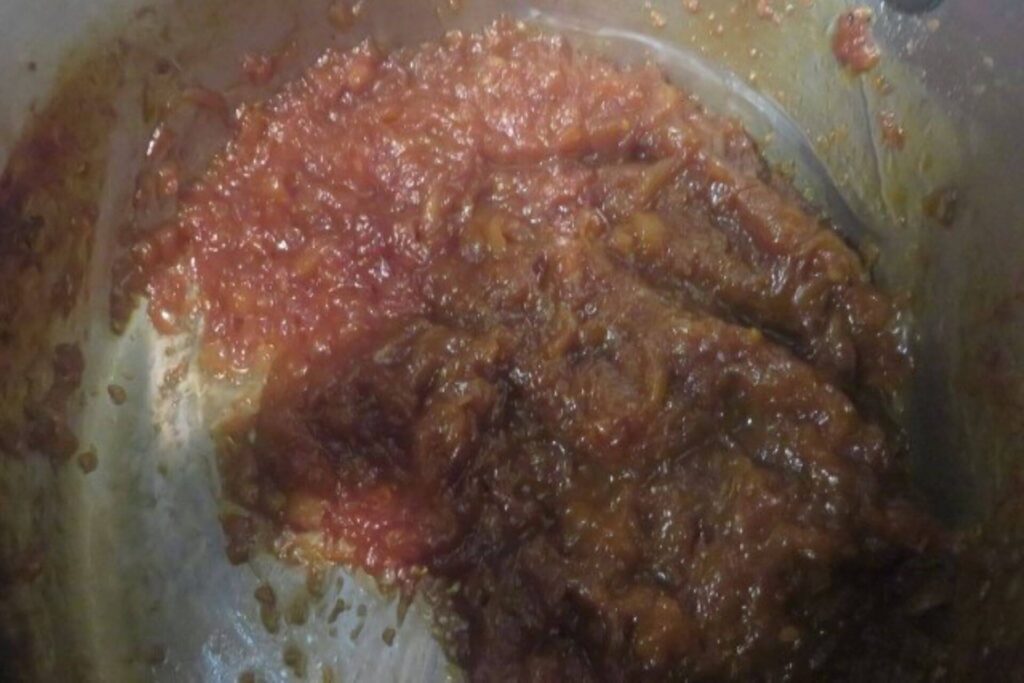
2. How to roll the short-crust pastry:
- Remove the prepared short-crust pastry from the refrigerator and let it stand at room temperature for a few minutes to make it easier to roll. Lightly dust the rolling pin and board. Roll the short-crust pastry to nearly 1/4″ thick and stamp out using a round (1.5″ diameter) cookie cutter.
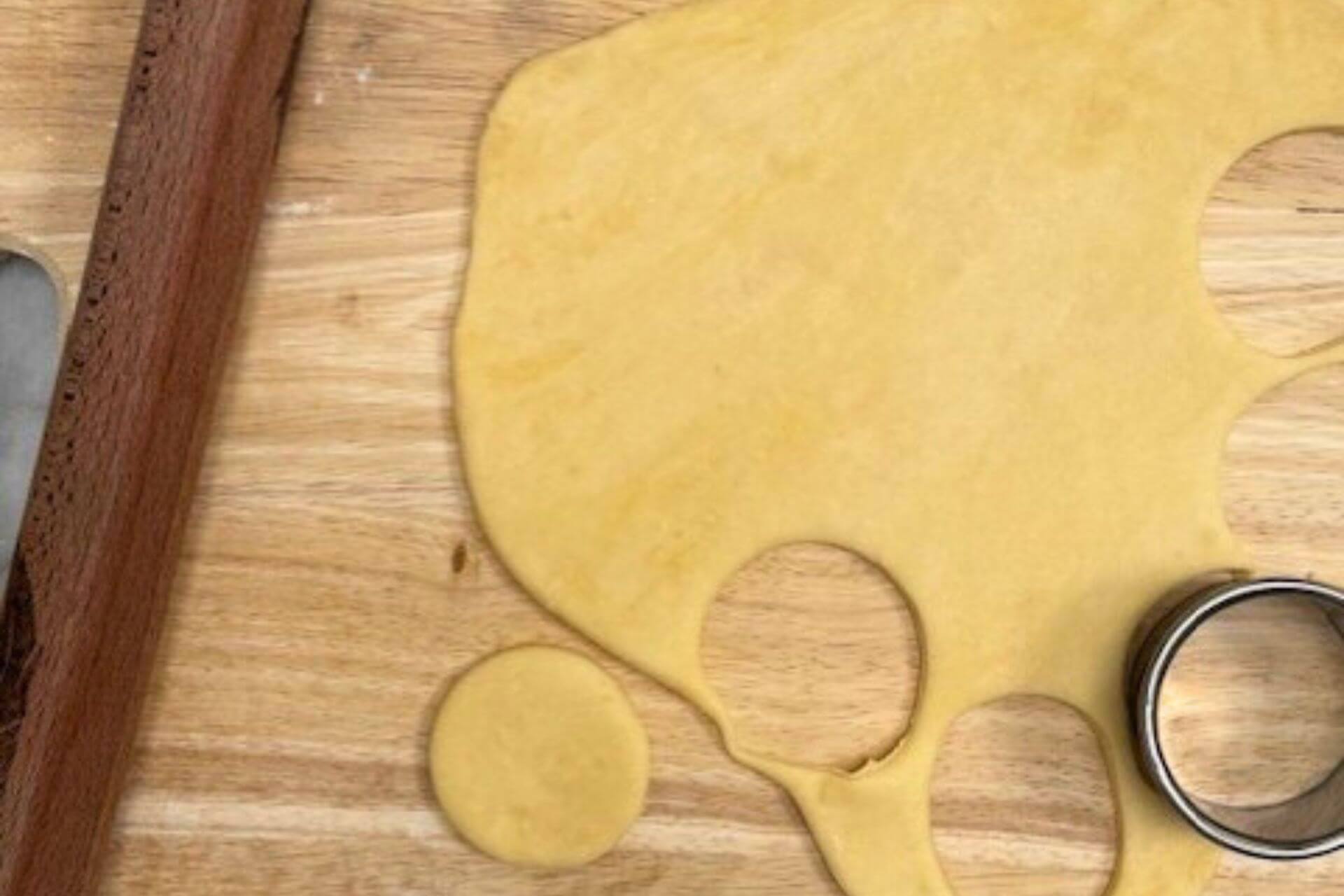
3. How to make the Singapore Pineapple Tart:
- Place the tart shells on a nonstick baking tray, leaving an inch of space between them. Brush the tarts with one egg yolk beaten with a teaspoon of milk. Use the tines of a fork to pierce the sides of the tart or make shallow cuts. Scoop a teaspoon of the pineapple filling with a lightly oiled spoon and make balls. Place the ball in the center of the tart and press down with the back of the spoon. Bake them for 11-13 minutes or until golden brown.
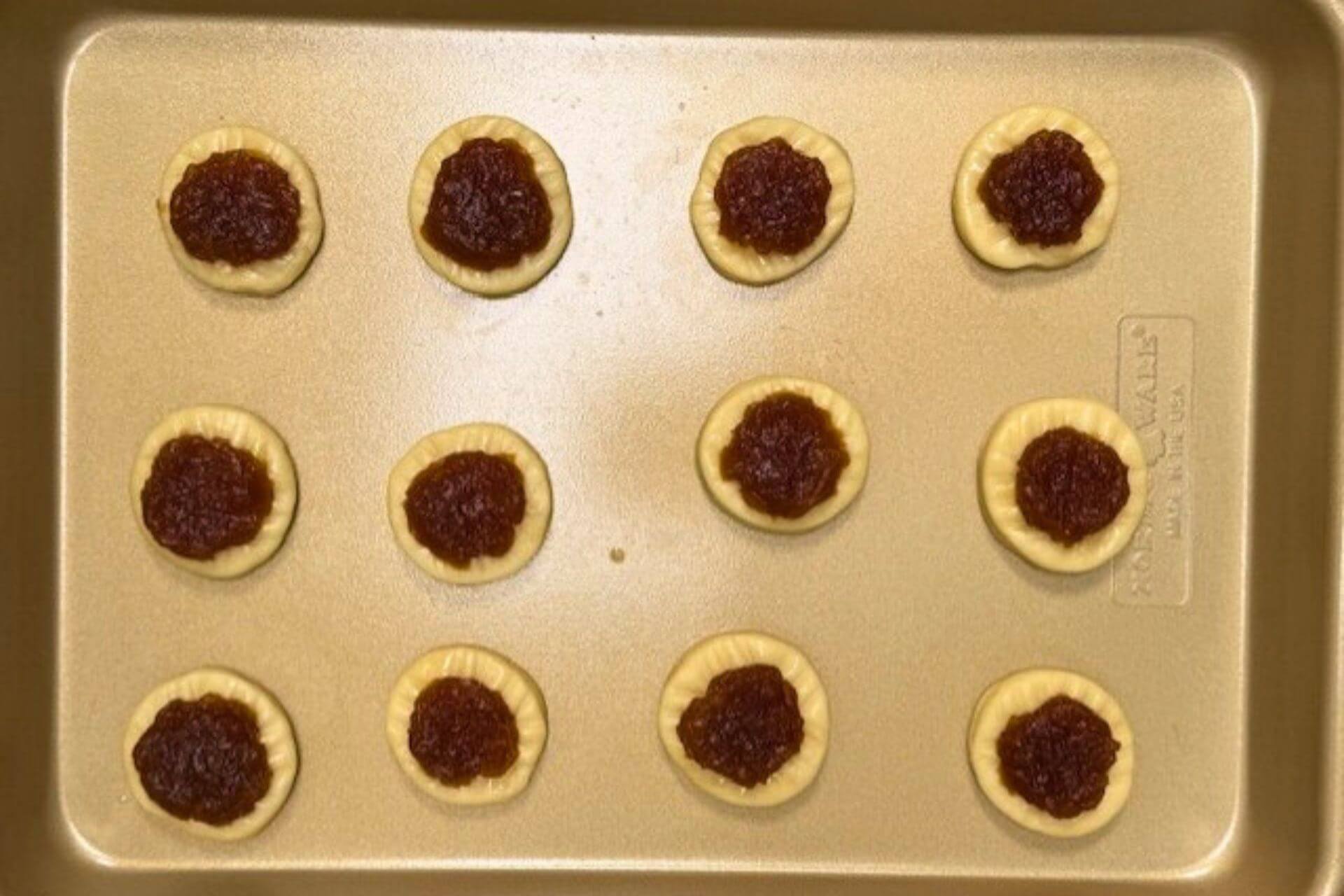
- Serve the Pineapple Tarts with hot tea or coffee or for dessert.

- Fresh pineapple is best for this Singapore Pineapple Tart recipe. If using canned pineapple, reduce the amount of added sugar.
- The pineapple filling is darker in color since I have used coconut palm sugar. If you like a light golden color filling, then use light brown sugar.
- To brighten the pineapple jam filling, add a few drops of lemon juice.
- The filling must be almost dry but not wet and runny. If the filling is too wet, the juices will run on the pastry, making it soggy.
Serving suggestions:
These delicious, festive Singapore Pineapple Tarts are perfect with tea, coffee, or as a dessert.
Storage:
The pineapple filling can be made ahead of time. Store the jam in sterilized dry glass jars with lids and refrigerate for up to one month. The jars have to be airtight and free from any moisture or there will be mold on it very soon. Short-crust pastry can be refrigerated for two weeks and frozen for three months.
Other tarts recipes that you might want to try:
Singapore Pineapple Tart Recipe
Equipment
- small pan, baking trays, oven
Ingredients
For the pineapple filling:
- ¾ cup pineapple grated with juice
- 2 tbsp coconut palm sugar
- 2 tbsp cane sugar
- ⅛ tsp salt
- ½ tsp butter unsalted
- a pinch nutmeg grated
- ⅓ lb short-crust pastry
Instructions
How to make the pineapple filling:
- Prepare the ingredients. Pulse or grate the peeled and cored pineapple and keep it aside.
- Add the coconut palm sugar, cane sugar, salt, and butter. Stir with a wooden spoon and scrape down the sides of the pot. When the mixture boils, lower the heat and stir constantly to prevent it from burning.
- Cook for 14 minutes or until the filling has thickened and is almost dry (with the juices evaporated). Add the grated nutmeg and mix well. Refrigerate the mixture for 10 minutes.
- Remove the prepared short-crust pastry from the refrigerator and let it stand at room temperature for a few minutes to make it easier to roll. Lightly dust the rolling pin and board. Roll the short-crust pastry to nearly 1/4" thick and stamp out using a round (1.5" diameter) cookie cutter.
- Preheat the oven to 415 degrees F.Place the tart shells on a nonstick baking tray, leaving an inch of space between them. Brush the tarts with one egg yolk beaten with a teaspoon of milk. Use the tines of a fork to pierce the sides of the tart or make shallow cuts. Scoop a teaspoon of the pineapple filling with a lightly oiled spoon and make balls. Place the ball in the center of the tart and press down with the back of the spoon. Bake them for 11-13 minutes or until golden brown.
- Cool the tarts on a wire rack and serve with tea, coffee, or for dessert.
Notes
- Fresh pineapple is best for this Singapore Pineapple Tart recipe. If using canned pineapple, reduce the amount of added sugar.
- The pineapple filling is darker in color since I have used coconut palm sugar. If you like a light golden color filling, then use powdered or light brown sugar.
- To brighten the pineapple jam filling, add a few drops of lemon juice.
- The filling must be almost dry but not too wet and runny. If the filling is too wet, the juices will run on the pastry, making it soggy.
Nutrition



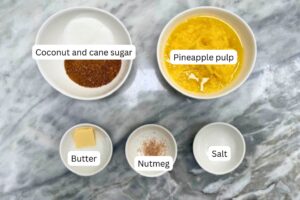



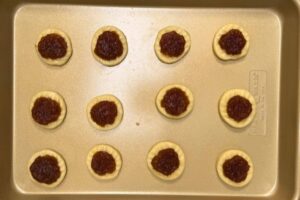
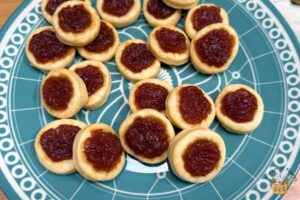




















I tried this recipe over the weekend, and my kids loved it!